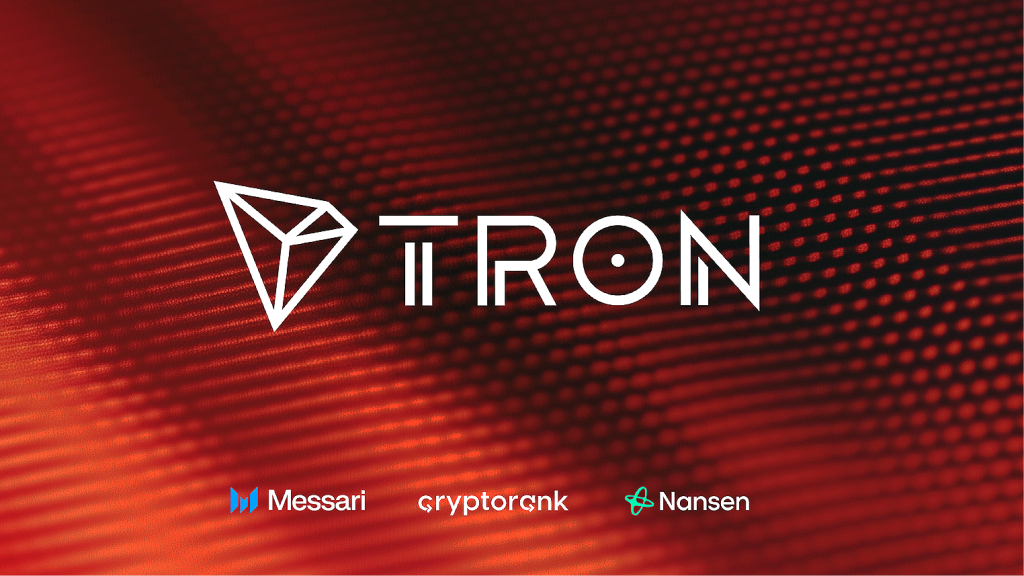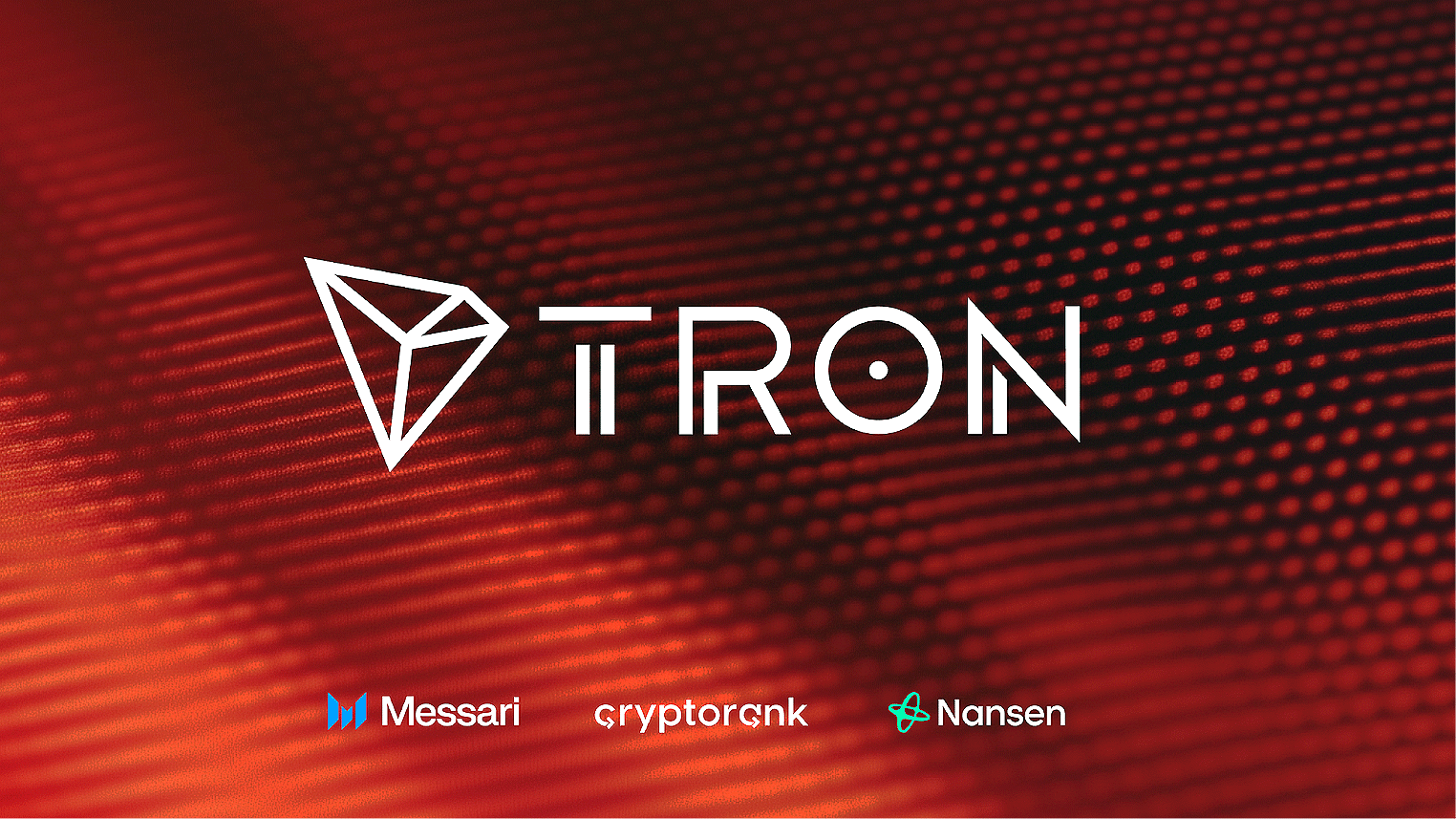
TRON’s Ascendancy: A Deep Dive into H1 2025 Performance
Introduction: A Blockchain Powerhouse Emerges
The first half of 2025 has been transformative for the TRON network, marking a period of unprecedented growth and dominance in the blockchain space. Independent reports from esteemed analytics firms like CryptoRank, Messari, and Nansen have highlighted TRON’s remarkable achievements, painting a picture of a thriving ecosystem driven by substantial revenue, stablecoin supremacy, and vibrant on-chain activity. This performance isn’t merely a fleeting success but the result of strategic vision, technological innovation, and a relentless focus on scalability and accessibility.
Financial Prowess: The $916 Million Revenue Milestone
TRON’s financial performance in the first half of 2025 is a testament to its growing adoption and utility. Generating $916 million in revenue is a monumental achievement, especially in the volatile cryptocurrency market. This revenue surge underscores the network’s increasing demand and the effectiveness of its economic model.
Sources of Revenue
The primary sources of TRON’s revenue include:
– Transaction Fees: TRON’s low transaction costs compared to competitors like Ethereum have attracted a massive user base. The high volume of transactions, particularly stablecoin transfers, contributes significantly to revenue.
– Decentralized Applications (dApps): The TRON ecosystem hosts a diverse range of dApps, from DeFi platforms to gaming and social media applications. These applications generate revenue through user engagement, transaction fees, and other economic activities.
– Stablecoin Operations: The dominance of USDT on the TRON network has led to substantial revenue from stablecoin-related transactions and services.
Implications of Financial Stability
This financial stability allows TRON to reinvest in its ecosystem, fostering further development, innovation, and adoption. It also provides a buffer against market downturns, ensuring the network’s long-term sustainability and resilience.
USDT Dominance: The Stablecoin King
One of the most compelling aspects of TRON’s success is its dominance in the stablecoin market, particularly concerning Tether (USDT). Reports indicate a staggering $81 billion USDT supply on the TRON network in H1 2025, solidifying its position as the primary infrastructure for this crucial digital asset.
Factors Driving USDT Dominance
Several key factors contribute to TRON’s USDT dominance:
– Speed and Cost-Effectiveness: TRON offers significantly faster transaction speeds and lower fees compared to Ethereum, making it an attractive option for users transferring USDT. This is particularly crucial for high-frequency traders and businesses dealing with large USDT volumes.
– Accessibility: TRON’s user-friendly interface and ease of integration have made it accessible to a broader audience, including those new to the world of cryptocurrencies.
– Strategic Partnerships: TRON has forged strategic partnerships with various exchanges and platforms, further solidifying its position as the go-to network for USDT transactions.
Benefits of USDT Dominance
This dominance translates into tangible benefits for the TRON ecosystem:
– Increased Liquidity: A high volume of USDT transactions enhances liquidity, making it easier for users to trade and transact.
– Attracting More Users: The popularity of USDT on TRON attracts a broader user base, including traders, investors, and businesses.
– Ecosystem Development: The focus on USDT fosters the development of USDT-based applications and services, further enriching the TRON ecosystem.
Independent Validation: CryptoRank, Messari, and Nansen
The recognition from CryptoRank, Messari, and Nansen adds significant weight to TRON’s achievements. These platforms are highly respected within the crypto industry for their independent, data-driven analysis. Their reports serve as validation of TRON’s technological advancements, financial performance, and overall ecosystem health.
CryptoRank: Comprehensive Market Insights
CryptoRank is known for its comprehensive tracking of cryptocurrency projects and market data. Its recognition highlights TRON’s strong market presence and community engagement. CryptoRank’s reports provide valuable insights into TRON’s market dynamics, user adoption, and overall performance.
Messari: In-Depth Market Intelligence
Messari is a leading provider of digital asset market intelligence. Its reports offer in-depth analysis of TRON’s on-chain activity, financial metrics, and ecosystem development. Messari’s insights provide a comprehensive view of TRON’s growth potential and long-term prospects.
Nansen: On-Chain Analytics and Smart Money Tracking
Nansen specializes in on-chain analytics and smart money tracking. Its recognition underscores TRON’s robust network activity and the behavior of sophisticated investors within its ecosystem. Nansen’s data highlights the network’s vibrancy and the strategic moves of key players.
Beyond the Numbers: Ecosystem Expansion and Innovation
While the financial figures and USDT dominance are impressive, it’s essential to look beyond the numbers and examine the underlying factors driving TRON’s growth. The network’s commitment to ecosystem expansion and innovation plays a crucial role in its sustained success.
Diverse Ecosystem of dApps
TRON has actively fostered the development of a diverse ecosystem of dApps, spanning various sectors, including DeFi, gaming, and social media. This diversification reduces reliance on any single application and attracts a broader user base. The TRON ecosystem now hosts a wide range of innovative applications, from decentralized exchanges to gaming platforms and social media networks.
Developer Community and Support
TRON has invested heavily in its developer community, providing resources, tools, and support to encourage the creation of innovative applications and services. The TRON Virtual Machine (TVM) and other developer tools have facilitated the rapid development of new projects, further enriching the ecosystem.
Technological Advancements
TRON has been at the forefront of technological advancements, implementing upgrades and improvements to enhance its scalability, security, and performance. These efforts have resulted in a more robust and efficient network, capable of handling a growing volume of transactions and supporting complex applications. Notable advancements include:
– Scalability Improvements: TRON has implemented various scalability solutions to handle increased transaction volumes, ensuring a seamless user experience.
– Security Enhancements: Continuous security upgrades have strengthened the network against potential threats, ensuring the safety of user assets and data.
– Performance Optimizations: Ongoing performance optimizations have improved transaction speeds and reduced latency, making TRON more efficient and user-friendly.
Comparing TRON to Ethereum: A Shifting Landscape
TRON’s rise has inevitably led to comparisons with Ethereum, the leading smart contract platform. While Ethereum remains the dominant force in the DeFi space, TRON has made significant strides in challenging its position, particularly in the stablecoin market.
Advantages of TRON Over Ethereum
TRON’s advantages over Ethereum include:
– Lower Transaction Fees: TRON’s significantly lower transaction fees make it a more attractive option for users transferring stablecoins and engaging in high-frequency transactions.
– Faster Transaction Speeds: TRON’s faster transaction speeds ensure quicker settlement times, enhancing the user experience and making it suitable for real-time applications.
– Energy Efficiency: While Ethereum has transitioned to a Proof-of-Stake (PoS) consensus mechanism, TRON’s Delegated Proof-of-Stake (DPoS) system remains highly energy-efficient, contributing to its sustainability.
Ethereum’s Strengths
However, Ethereum boasts several strengths that set it apart:
– Larger Developer Community: Ethereum has a larger and more established developer community, fostering a more diverse ecosystem of dApps.
– Diverse Ecosystem: Ethereum’s ecosystem is more diverse, with a wide range of applications and services across various sectors.
– Focus on Decentralization: Ethereum places a greater emphasis on decentralization, ensuring a more distributed and resilient network.
The Beneficial Competition
The competition between TRON and Ethereum is ultimately beneficial for the blockchain industry. It drives innovation, encourages technological advancements, and provides users with more choices. As both networks continue to evolve, they will likely find complementary roles in the broader blockchain ecosystem.
Conclusion: TRON’s Future Trajectory
TRON’s stellar performance in H1 2025, validated by leading analytics firms, signifies a new era for the network. Its financial prowess, USDT dominance, and commitment to ecosystem expansion have positioned it as a major player in the global blockchain landscape.
A Vision for the Future
TRON’s success story is not just about numbers; it’s about building a robust, accessible, and efficient platform that empowers users and fosters innovation. As TRON continues to evolve and adapt to the ever-changing crypto landscape, it is poised to play an increasingly significant role in shaping the future of decentralized finance and the broader blockchain ecosystem.
Stepping Stones to a Brighter Future
The $916 million revenue and $81 billion USDT supply are not just milestones; they are stepping stones to a future where TRON is synonymous with accessibility, efficiency, and innovation in the world of digital assets. With a strong foundation and a clear vision, TRON is well-positioned to continue its ascent, driving the next wave of blockchain adoption and transformation.





